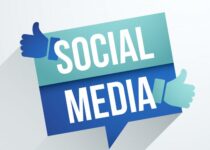What’s New in Digital Marketing in 2025?
The world of digital marketing continues to evolve at lightning speed, and 2025 is set to bring even more groundbreaking advancements. With rapid technological developments, changing consumer behaviors, and the rise of immersive digital experiences, marketers are increasingly embracing innovative strategies to stay ahead. From artificial intelligence to the metaverse, the future of digital marketing is not only exciting but also more dynamic than ever. Here’s a deep dive into the key trends that are shaping the digital marketing landscape in 2025.
1. AI-Powered Personalization and Automation
Artificial Intelligence (AI) has been revolutionizing digital marketing for years, but by 2025, it will have fully integrated into every aspect of the field. AI-powered personalization is no longer just about addressing customers by their names in emails — it’s about hyper-targeted content that adapts in real-time based on user behavior, preferences, and context.
Automation tools, fueled by AI, now handle everything from personalized ad delivery to chatbot conversations, content creation, and predictive analytics. With machine learning models continuously improving, businesses are able to predict customer needs and deliver precisely tailored content at the perfect moment, creating seamless, personalized experiences across all digital channels.
2. The Rise of the Metaverse
The metaverse — a virtual, interconnected universe where users can socialize, work, and shop — is one of the most exciting developments in 2025. Marketers are diving headfirst into this digital frontier, creating immersive brand experiences within these virtual spaces. From virtual storefronts to interactive events, brands are building their presence in the metaverse to connect with consumers in new, engaging ways.
Major companies are hosting virtual product launches, concerts, and brand collaborations in these spaces, allowing users to interact with products and services in 3D environments. For brands, the metaverse opens up endless possibilities for storytelling, customer engagement, and experiential marketing.
3. Voice Search and Visual Search Optimization
As smart speakers and voice assistants become ubiquitous in households, voice search is a key area of focus for digital marketers in 2025. Consumers are using voice commands more frequently to search for products, services, and information, which means optimizing content for voice search is no longer optional.
Additionally, visual search is on the rise, thanks to advancements in image recognition technology. Platforms like Pinterest and Google Lens allow users to search for products by simply uploading a picture. As a result, marketers need to ensure that their content is optimized for visual search by including high-quality images, alt text, and metadata that align with what consumers are looking for.
4. Sustainability and Purpose-Driven Marketing
By 2025, consumers are more conscious of sustainability and social responsibility than ever before. Brands that fail to align with environmental and ethical values risk losing customer loyalty. Purpose-driven marketing is no longer just a trend but an expectation.
Businesses are increasingly focusing on communicating their efforts toward sustainability, inclusivity, and corporate responsibility. Authenticity is key — consumers can spot greenwashing or insincere marketing a mile away. Brands that prioritize transparency and demonstrate real, meaningful contributions to social causes will thrive in this new era of value-driven marketing.
5. Zero-Party Data Collection
With growing concerns about data privacy and stricter regulations, third-party cookies are becoming a thing of the past. In 2025, marketers are relying more on zero-party data — information that consumers willingly share with brands, such as preferences, feedback, and purchase intentions.
This shift puts the power back in the hands of consumers, making it crucial for brands to foster trust and build direct relationships with their audience. Loyalty programs, interactive surveys, and personalized experiences encourage customers to share data voluntarily, allowing brands to deliver highly tailored marketing without breaching privacy boundaries.
6. Short-Form Video Dominance
In 2025, short-form video content is still king. Platforms like TikTok, Instagram Reels, and YouTube Shorts continue to dominate, thanks to their snackable, engaging formats that capture consumer attention quickly. Brands that can create authentic, creative short-form videos will continue to thrive in this space.
This format allows for viral marketing opportunities, quick bursts of storytelling, and real-time trends. Expect to see even more brands harnessing user-generated content (UGC) in this format, leveraging social proof and relatability to build trust and engagement with their audiences.
7. Augmented Reality (AR) for Product Interaction
Augmented Reality (AR) is playing a significant role in enhancing customer experiences in 2025, particularly for product interactions. AR allows consumers to virtually “try on” clothing, see how furniture fits in their homes, or even test makeup looks from the comfort of their smartphones. This technology bridges the gap between online and offline shopping, offering a more immersive and confident buying process.
Brands are investing heavily in AR experiences to help consumers visualize products before purchasing, reducing return rates and boosting customer satisfaction. AR isn’t just for e-commerce; industries like real estate, automotive, and entertainment are also capitalizing on its potential.
8. Influencer Marketing 3.0
Influencer marketing has evolved once again in 2025. While traditional influencer marketing still exists, micro and nano-influencers — individuals with smaller, highly engaged communities — are playing a more significant role in brand campaigns. Their authenticity and niche audiences resonate more with today’s consumers, who value trust and personal connection over mass appeal.
Moreover, virtual influencers — digital avatars or AI-generated personalities — are gaining popularity. These non-human influencers are being used by brands to reach audiences in the metaverse and other digital spaces, providing unique, controlled marketing opportunities.
9. Omnichannel Experiences and Connected Devices
Consumers are increasingly expecting a seamless, consistent experience across all digital touchpoints. In 2025, the integration of omnichannel strategies is more important than ever. From websites to mobile apps, voice assistants, and physical stores, brands are ensuring that their messaging, branding, and customer experience are unified across every platform.
Connected devices, from wearables to smart home technology, offer marketers new opportunities to engage consumers in personalized ways. For example, fitness brands can send tailored messages based on a user’s workout habits, and smart refrigerators can suggest groceries or recipes based on what’s inside.


